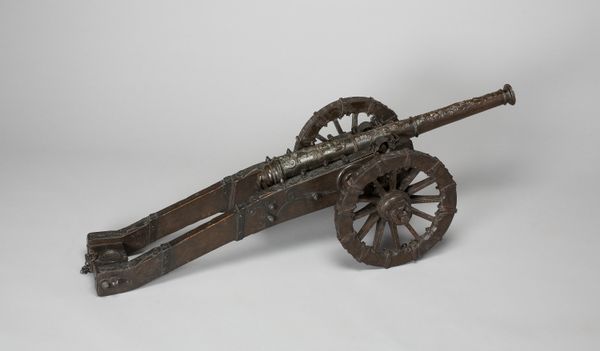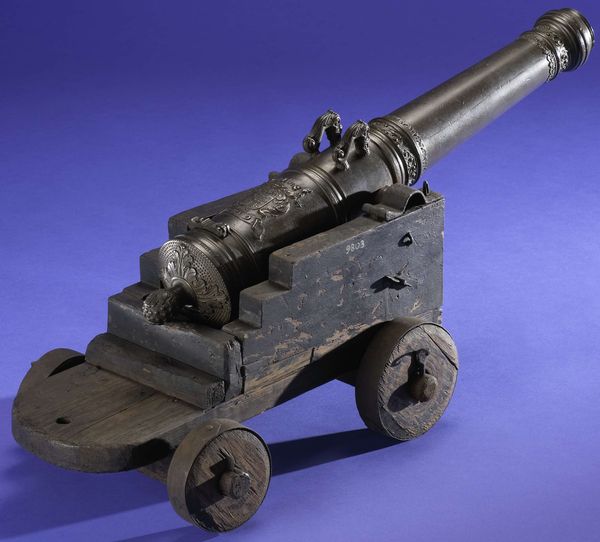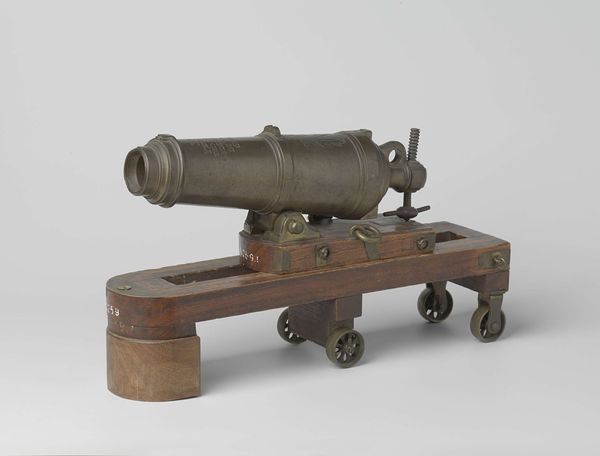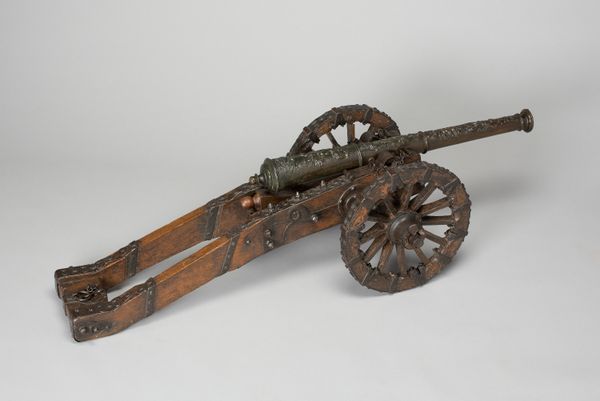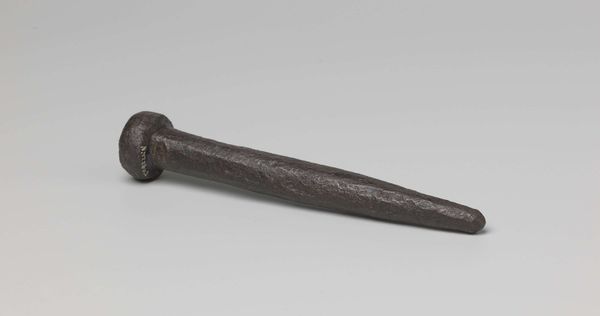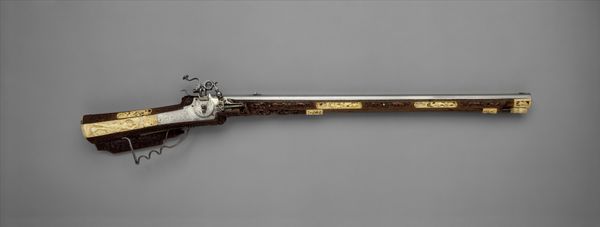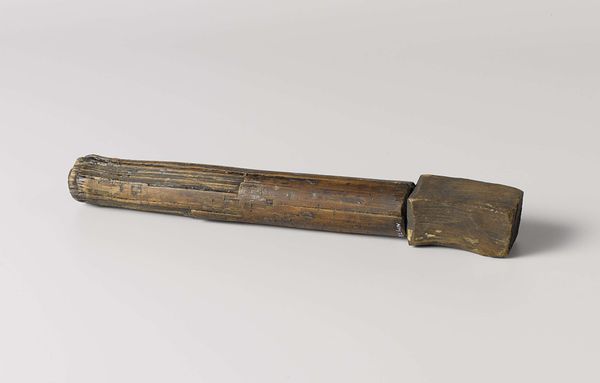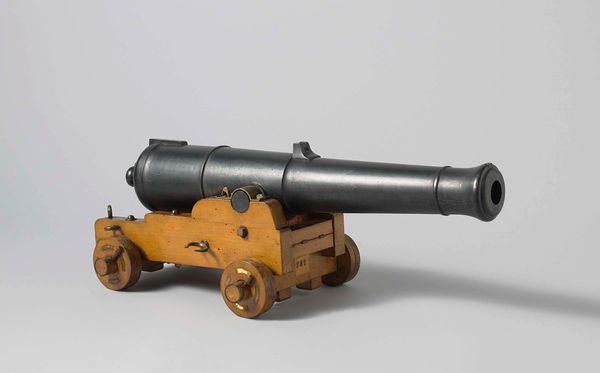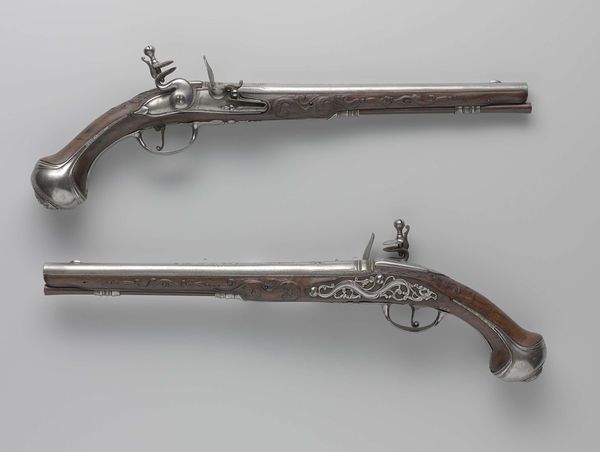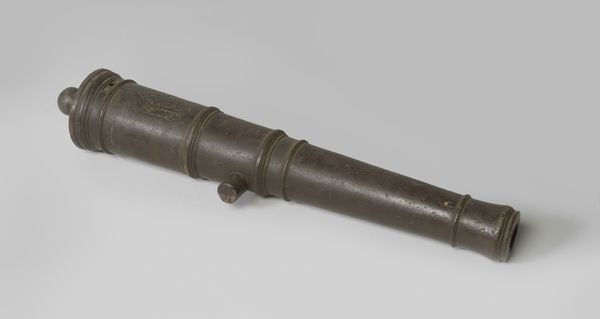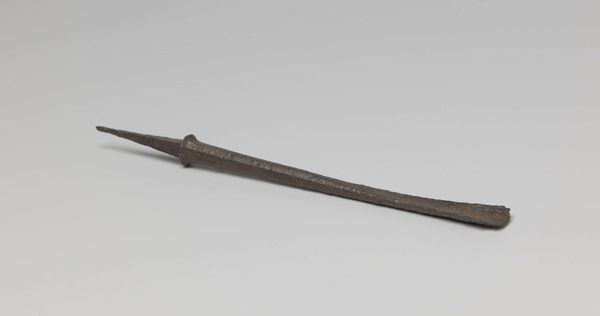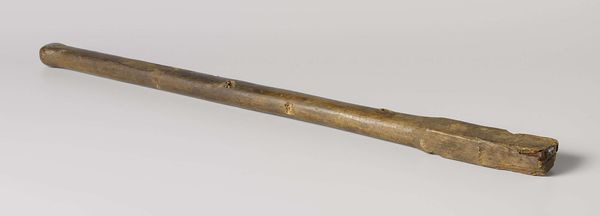
metal, bronze, sculpture, wood
#
baroque
#
metal
#
sculpture
#
bronze
#
sculpture
#
wood
#
history-painting
Dimensions: length 123 cm, diameter 5.5 cm
Copyright: Rijks Museum: Open Domain
This bronze cannon belonged to the Van Reigersberg family, and was made by Johannes Burgerhuys sometime before 1679. The cannon is as much a sculpture as it is a weapon. The bronze is intricately engraved and the carriage is skillfully decorated with birds and foliage. This was the time of the Dutch East India Company, and a growing Dutch presence in international trade and colonization. The visual richness and symbolic language suggest a society grappling with the complex layering of power, wealth, and violence. As we contemplate its details, consider its use in projecting Dutch power across the seas. Its beauty obscures a history of conflict and conquest. The cannon serves as a potent reminder of the intertwined narratives of artistic expression and historical context. It invites us to reflect on the legacies of colonialism, and question the stories told through objects of beauty crafted during times of conflict.
Comments
rijksmuseum about 2 years ago
⋮
These cannons bear the coat of arms of the Van Reigersberg family of Zeeland and the inscription ‘Semper idem’ (always the same). Their presumed owner was Johan van Reigersberg, committee member for Zeeland in the Admiralty of Amsterdam and dike reeve of the Beemster polder. The cannons probably stood in his house, Molembaix, in Walcheren. The cannon decorations and herons and water plants on the carriages allude to the family name.
Join the conversation
Join millions of artists and users on Artera today and experience the ultimate creative platform.
